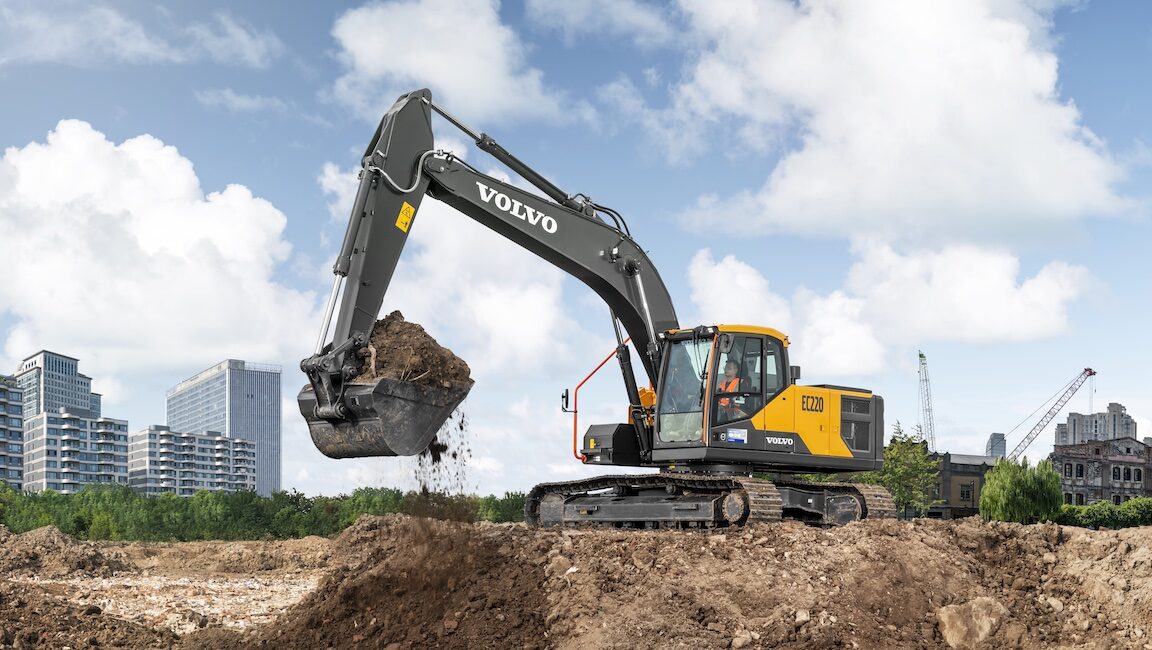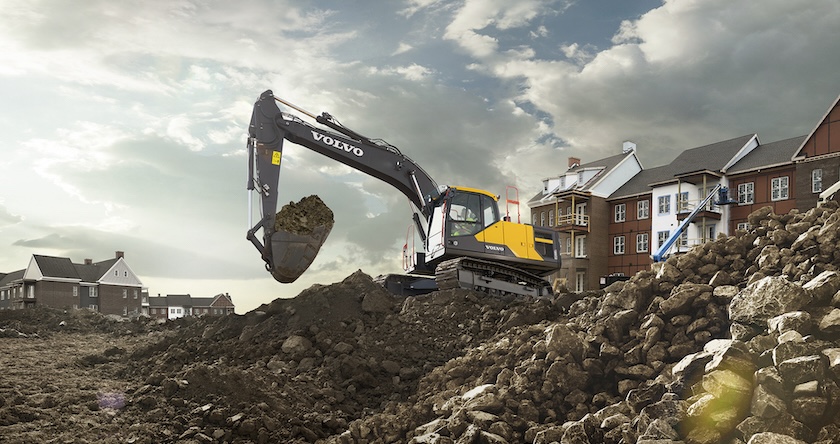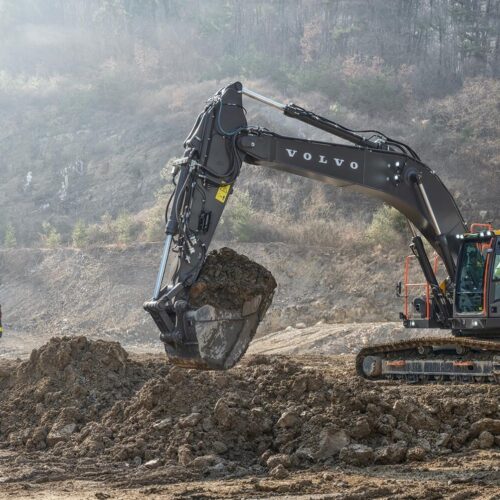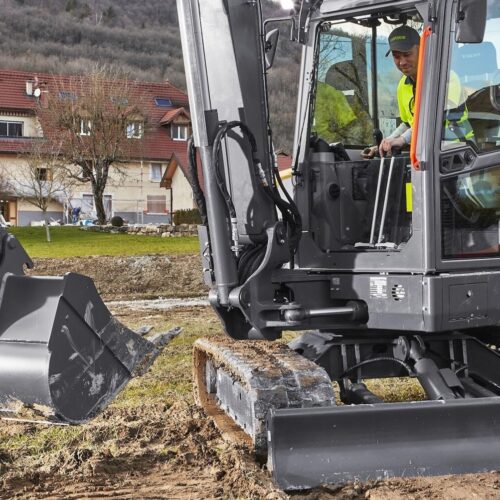How Midsize Excavators Can Grow Your Business
In construction, adaptability is oftentimes the key to success. The ability to seamlessly transition between projects of varying sizes and scopes sets the most efficient contractors apart — and the […]


In construction, adaptability is oftentimes the key to success. The ability to seamlessly transition between projects of varying sizes and scopes sets the most efficient contractors apart — and the midsize excavator is the workhorse behind this versatility.
Midsize excavators — those in the 15- to 35-ton range with around 120 to 170 hp — strike a perfect balance between power and agility. Their capacity to navigate the demands of both smaller-scale tasks and larger, more complex projects makes them an invaluable asset for any construction team.
From simple landscaping projects to major infrastructure jobs, these machines excel in a wide range of scenarios. Whether you’re a seasoned contractor looking to take on more work or an aspiring start-up ready to get in the game, understanding the versatility of medium excavators is the key to unlocking a new realm of possibilities.
Small-Scale Excavator Jobs
When it comes to smaller projects that require precision and maneuverability, midsize excavators are nimble movers while still offering plenty of power to take on larger tasks. Here are some examples:
- Residential Construction: These machines can handle digging foundation trenches, excavating for swimming pools and other tasks on residential construction sites. For example, our Volvo EC140E, ECR145E and EC160E are especially popular with smaller contractors for this type of work, either as an addition to an in-house operation or as part of a rental fleet.
- Residential Utility Work: Midsize excavators are versatile enough to assist in tasks like installing sewer and water laterals, repairing sewer systems and digging holes for posts or pylons.
- Landscaping: Midsize excavators are also perfect for tasks like digging trenches for irrigation systems, creating garden features, digging ponds or clearing small plots of land.

Medium-Duty Excavator Jobs
Ready to move up? The medium excavator class can flex to cover step-up projects like:
- Commercial Construction: Midsize excavators like the Volvo EC200E and EC220E offer the breakout forces necessary to tackle larger excavation and grading tasks on commercial construction sites. They can dig building foundations, create parking lots or prepare sites for new structures.
- Roadwork: They’re also effective in road construction by digging ditches, installing culverts and even excavating for road widening projects. Short-swing or zero-tail midsize excavator models like the Volvo ECR235E are well suited for narrow single lane work as the upperworks can swing completely within its undercarriage width.
- Site Preparation: These machines are also used in preparing sites for larger developments like shopping centers, industrial facilities and housing complexes.

Large Excavator Projects
Looking to scale up even further? Midsize excavators are ready to play a supporting role. Don’t overlook their ability to perform on heavier projects like:
- Major Infrastructure Projects: The larger sizes of midsize excavators — like the Volvo EC250E, EC300E and ECR355E — can contribute to major infrastructure projects like bridges, dams and tunnels by assisting with excavation, foundation work and earthmoving.
- Demolition: They’re also well suited for low-rise demolition projects for both dismantling and cleanup and can be outfitted with factory-fit guarding packages and specialized attachments such as shears, hammers or grapples.

Factors to Consider
Once you settle on the scope of your core work, the following criteria can help dial in the best excavator model. These factors include:
- Bucket Type and Capacity: A matched bucket is essential for optimal performance. An oversized bucket will bog down your excavator and slow cycle times, while an undersized bucket slows productivity and can lead to increased fuel consumption. Volvo midsize excavator buckets range from 0.36 yd3 to 1.88 yd3 and come in a variety of types including grading, trenching, rock, utility and digging.
- Digging Depth and Reach: What’s your max digging depth and reach? Digging foundations necessitates greater depth and reach. Likewise, if the excavator needs to stay stationary due to space constraints or safety concerns, longer reach and digging depth become very important.
- Lift Capacity: Know the max lift capacity of your excavator depending on boom height and lifting radius. As an example, lift capacity is a bigger concern if you’re using your excavator primarily to move material or set trench boxes and pipe versus grading. This ensures smooth operation and optimal fuel efficiency.
- Hydraulics: An excavator’s hydraulic system provides the power to operate various attachments including buckets, thumbs, hammers and tiltrotators. Consider the type and number of different attachments you plan to use, as each requires different hydraulic flows — then ensure your excavator has the hydraulic capacity to power them.
Midsize excavators truly offer exceptional versatility and are great options for both the single owner operator up to large contractors running multiple crews. They have a unique ability to move up and down in job sizes effortlessly. They’re valuable additions to any fleet, helping businesses take on a wider range of projects to expand business opportunities. Check out the Volvo mid-size excavator page to compare models and specifications.
If you need help understanding what you can afford or what your monthly payments might be for a new medium-sized excavator, use our handy online financial calculators. You can also determine the total cost of ownership of a new Volvo excavator using our easy-to-use TCO calculator.
And if you ever have questions or need help with the numbers, your nearest Volvo dealer is ready to assist — just reach out.

Categories: Construction Equipment, Insights

